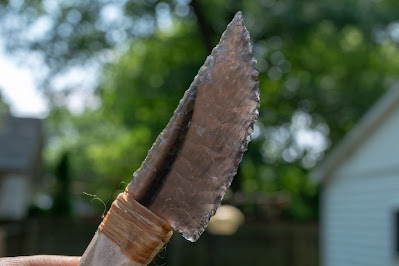The summer of 2013 saw the third iteration of Pentax's Q-series of subcompact mirrorless interchangeable lens cameras. In the form of the Q7, the littlest MILC had arguably finally come of age.
Externally, the Q7 was identical to its predecessor, the Q10. It had the same "tiny SLR"-shaped polymer body shell and was available in black, classic panda, and the whole array of kawaii color combos that the Q10 came in.
From a controls standpoint, it was completely the same as both preceding models, so you can refer to
my Pentax Q review for a rundown of the buttons and knobs.
The big change was an increase in sensor size from 1/2.3" to 1/1.7", while maintaining the same 12 megapixel resolution. The larger sensor was the size most commonly found in enthusiast compacts, and by spreading the same number of photosites over an area one and three quarters times the size, low light performance was increased while noise was reduced.
Interestingly, looking at the crop factors and the focal lengths of the lenses, one is forced to assume that Pentax had intended to use the bigger sensor all along. For instance, the 5-15mm standard zoom and 15-45mm telephoto have fields of view equivalent to 27.5-83mm and 83-249mm on the older cameras. On the new Q7 with its larger sensor, however, they are 23-69mm and 69-207mm. That's so close to the classic pairing of a 24-70 and 70-200 zoom as to make no nevermind.
Despite the larger sensor, the Q7 held the price point of the Q10, with an MSRP of $499, with the 02 kit zoom included.
2013 also saw two more additions to the Q-mount lens library: The adorable little 07 Mount Shield fixed focus 11.5mm f/9 lens which was basically a body cap with a lens element, and a new 08 Wide Zoom. The latter was a 3.8-5.9mm f/3.7-4 that gave a field of view equivalent to a 17.5-27mm lens on a 35mm camera.
All of the above photos were shot with the 5-15mm 02 Standard Zoom on my Q7.
My Q7, as you can see in the photo that opens this post, is black and it came packaged with a matching black kit zoom. The only other Pentax Q lens you can get in black is the 01 Standard Prime, but they bring blood money on the 'Bay, so I've held off so far.
So far...
(If you want to play with a Pentax Q7, Roberts Camera here in Indy has a classic-looking black-on-silver "panda" Q7 with three matching lenses: 01 Standard Prime, 02 Standard Zoom, and 06 Telephoto Zoom for sale at the time this post was written. The whole shebang is
$549.99. I have no affiliate relationship with them, but I'm a very satisfied frequent customer.)
.


















































